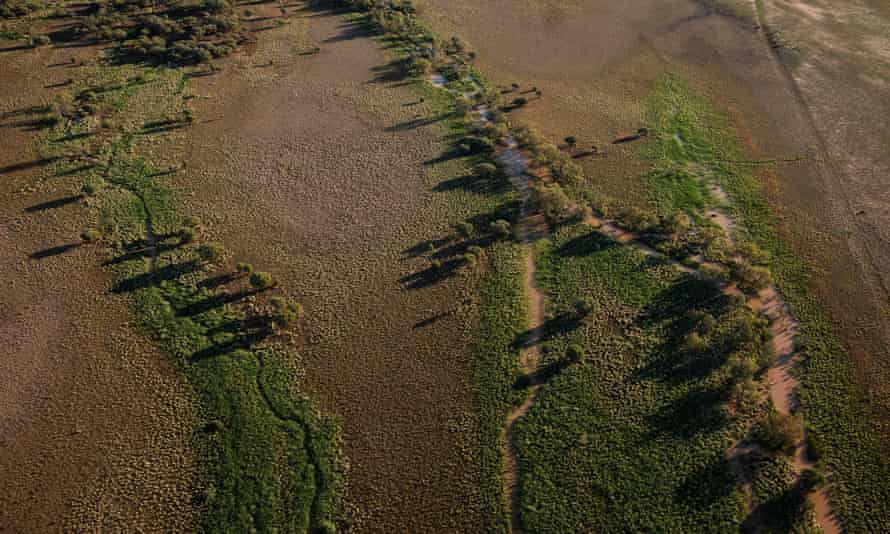Extract from The Guardian
Environmental investigations Australia news
Australian
Conservation Foundation calls for reform to tackle Australia’s
declining environment funding ahead of this year’s budget

Last modified on Mon 10 May 2021 06.45 AEST
The proportion of federal budget spending on environment and climate programs has fallen by nearly a third since the Coalition was elected eight years ago, according to a new conservation group analysis.
The Australian Conservation Foundation found that for every $100 spent in last year’s budget just 37 cents was spent protecting the environment and 16 cents on addressing the climate crisis.
That’s down from 50 cents and 25 cents respectively when the Coalition was elected in 2013-14, according to the ACF.
Releasing its analysis on the eve of this year’s federal budget, the ACF called for policy reform matched by investment to build resilience to environmental threats.
The environment’s declining share of the budget has come as calls for greater action to address a climate emergency have grown. Scott Morrison has resisted pressure to join major developed countries in setting a science-based greenhouse gas emissions reduction target for 2030, and to date not joined more than 100 other nations in adopting a formal target of reaching net zero emissions by 2050.
On the natural environment, a legislated review urged an overhaul of national conservation laws after finding Australia’s natural heritage environment was in a state of decline and under increasing threat. Scientists warn Australia is in the grip of an extinction crisis that is likely to have worsened after last year’s catastrophic bushfires.
Matt Rose, an economist with the foundation, said overall budget spending had increased 60% since 2013 while spending on the environment, water, climate change and clean energy had risen by about 12% to nearly $3.5bn. If spending on environment and climate programs had kept pace with the overall increase they would have received more than $5bn, he said.
According to forward estimates in October, environment and climate funding is expected to be reduced over the next three years.
Rose said funding for biodiversity programs had been hit particularly hard, falling 28% in dollar terms over eight years. The cut could reach 56% by 2023-24 based on projections in last year’s budget. It would mean biodiversity spending would be more than $200m a year less than in 2013-14.
“Our budgetary priorities suggest our elected representatives do not really care about Australia’s unique wildlife or about handing on a safe climate to coming generations,” he said. “Policy reform and investment are critical to improve the health of Australia’s environment and build resilience to existing, emerging and future threats.”
The analysis was shared with the offices of the environment minister, Sussan Ley, and the emissions reduction minister, Angus Taylor, on Friday. They did not respond to questions about it.
Prof Richard Kingsford, the director for the University of New South Wales’ centre of ecosystem science, said he was not surprised by what the analysis found. He said the spending on biodiversity programs had been inadequate before the Coalition was elected and had gone backwards.
He said there had been nothing substantial to replace the hollowing out of billion-dollar programs such Landcare, but increasing funding for well-designed biodiversity programs in Tuesday’s budget could slow the rate of decline.
“There are things we can do to fix it but we’re not getting the funding to do that, and that means it’s just going to get worse and for future generations it’s just going to get much more expensive,” he said.
Kingsford said last year’s review of the national Environment Protection and Biodiversity Conservation (EPBC) Act by the former competition watchdog head, Graeme Samuel, had been clear that marine, terrestrial and freshwater ecosystems were worsening, and the country should be measuring the impact in a similar way to how it tracked changes in the economy and unemployment.
The foundation’s analysis found climate spending had been largely stripped from government departments and handed to public agencies such as the Clean Energy Finance Corporation and the Australian Renewable Energy Agency, which together were now responsible for more than 80% of funding in the area.
Rose said while some global leaders had backed “green recovery” measures during Covid-19, the Morrison government had emphasised gas, a “highly polluting fossil fuel”.
Last week, Arena announced $103.3m for commercial-scale renewable hydrogen projects in Western Australia and Victoria, while Taylor committed $58.6m for measures to support the expansion of fossil fuels as part of the government’s promised “gas-fired recovery” from the Covid-19 pandemic. It followed $52.9m for gas in last year’s budget.
In an interview with Guardian Australia on Friday, the treasurer, Josh Frydenberg, left open the possibility the government would pay to build a new $600m gas-fired power plant in New South Wales. Experts have said the gas plant is not needed to guarantee electricity supply, and there are cheaper options to stabilise the grid that did not release greenhouse gas emissions.
.png)
No comments:
Post a Comment